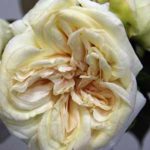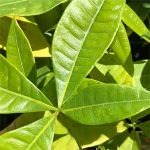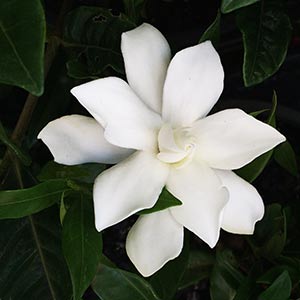
Gardenias are one of the most popular fragrant flowering shrubs and are well suited to growing in the garden border or in pots and containers.
Regarded as hardy in Zones 8-10, however in cooler area they can be grown in containers and provided shelter indoors or on an enclosed patio they can flourish.
Gardenias are particularly popular in Hawaii, South Carolina, Montana, Alabama andGeorgia
Making a Gardenia Bouquet
A gardenia bouquet is perhaps one of the most elegant of all and you can grow your own flowers for a wonderful fragrant and elegant bouquet.
You need to look for the longer stemmed larger flowering varieties, not the dwarf cultivars and you will also need to protect the flowers from rain before picking.
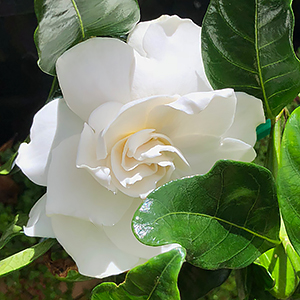
Make sure that you take enough foliage to provide a nice backing. and try wrapping this stems in a white material to add further refinement.
Of course you could just buy one from the florist, but growing your own is real something special.
Gardenia Care
Gardenias prefer a temperate to warm climate with a little humidity. Generally they are regarded as suitable to USDA Zones 10 – 11, however they can be grown to Zone 7 if grown in a sunny protected position.
In cooler areas look for a warm position against a wall or in a pot on a patio. Gardenia prefer a humus rich well drained slightly acidic soil.
Protection from hot afternoon sun in warmer areas is advisable. Gardenias like a cool root run so mulch well during warmer months.
Light
Gardenias are subtropical plants and they do like warmth and sun, however in warmer climates they will need some protection from their great of the afternoon sun and hot drying winds.
We suggest a position with good morning sun, and light afternoon shade in warmer zones.
In cooler zones, full sun and a good layer of mulch to maintain a more even soil temperature and retain moisture in the afternoon sun.
Soil and Watering Gardenias
These two work together, with good humus rich soil, and a layer of organic mulch you may only need to water once a month, depending on climate. The hotter the climate and less organic material in the soil the more often you will need to water.
Although Gardenias prefer a humus rich moist soil, they do not like to be water logged, so a free draining soil is best.
- 15cm of mulch will lower water requirements and improve organic content in the soil.
- Soil should be moist however never wet and soggy.
- Dry soil will often cause bud drop, or failure of the flower buds to open.
- Aim for a slightly acidic soil a pH of around 6 is ideal.
- When replenishing mulch add a layer of cow manure or sheep manure, and you have it leaf mould as well. You can make your own leaf mould, see our article.
- Remember to water the soil and not the foliage or flowers.
Humidity
Being a sub tropical plant, humidity is important. The easiest way to increase humidity is to position the Gardenias away from drying winds. Grow them amongst afar plans that thrive in acidic soils.
Pruning Gardenias
- Gardenias can be pruned to shape after flowering if required.
- Deadhead to promote a more flowers.
Fertilizing Gardenias.
Many gardeners find that an all purpose fertilizer does not seem to be adequate for gardenia plants, this is usually to do with soil pH.
Gardenias prefer a slightly acid soil with a pH of 5-6. We suggest using a specially formulated gardenia fertilizer at all times.
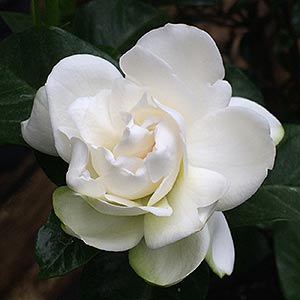
Gardenia Varieties
Gardenias come in a number of species and forms including low growing varieties that make excellent edging plants
- Gardenia radicans a low growing species is more tolerant of colder climates than other species. (picture above right)
- Gardenia augusta ‘Radicans’ is a prostrate form (even lower growing), well suited to low garden borders.
- Gardenia thunbergia will grow to be a large shrub and is a stunning garden plant.
- Gardenia tubifera (Golden Gardenia) is form South East Asia and has attractive golden yellow flowers.
- Gardenia Jasminoides ‘August Beauty’ has very attractive large flowers in a compact bush, an excellent gardenia for cut flowers.
- Gardenia jasminoides veitchii has smaller leaves than some species and will grow to 4′, suitable to Zones 8-11.
- Gardenia jasminoides kliems hardy is a dwarf variety that has glossy dark green foliage and ivory flowers in late summer Zones 7-10.
- Gardenia jasminoides Ellis is reportedly used in Chinese medicine.
- Gardenia taitensis requires a warm climate, flowers are interesting but perhaps not as spectacular as others.
- Gardenia Veitchii will reach 4 – 5 ft and is an outstanding fragrant plant for warmer areas.
Propagation
Propagation is easy by taking softwood cuttings in late spring, semi hardwood cuttings in fall are also suitable, best wintered in a cold frame.
Gardenia Problems
- Yellow leaves on Gardenias
Usually caused by poor nutrient balance, fertilize during spring to avoid this and water regularly during warmer months. White oil can be used if scale or mealybugs is a problem. - Bud Drop on Gardenias
Usually caused by irregular watering, so not to wet and not to dry. Every second to third day during warmer months depending on soil, and local conditions. - Sooty Mold on Gardenias.
Caused by aphids, scales and white-fly. Neem oil or White Oil can be used to treat Sooty Mold. Be sure to follow the manufactures instructions. These are very general care instructions.
Consult your local nursery for detailed and specific care instructions for Gardenia.
